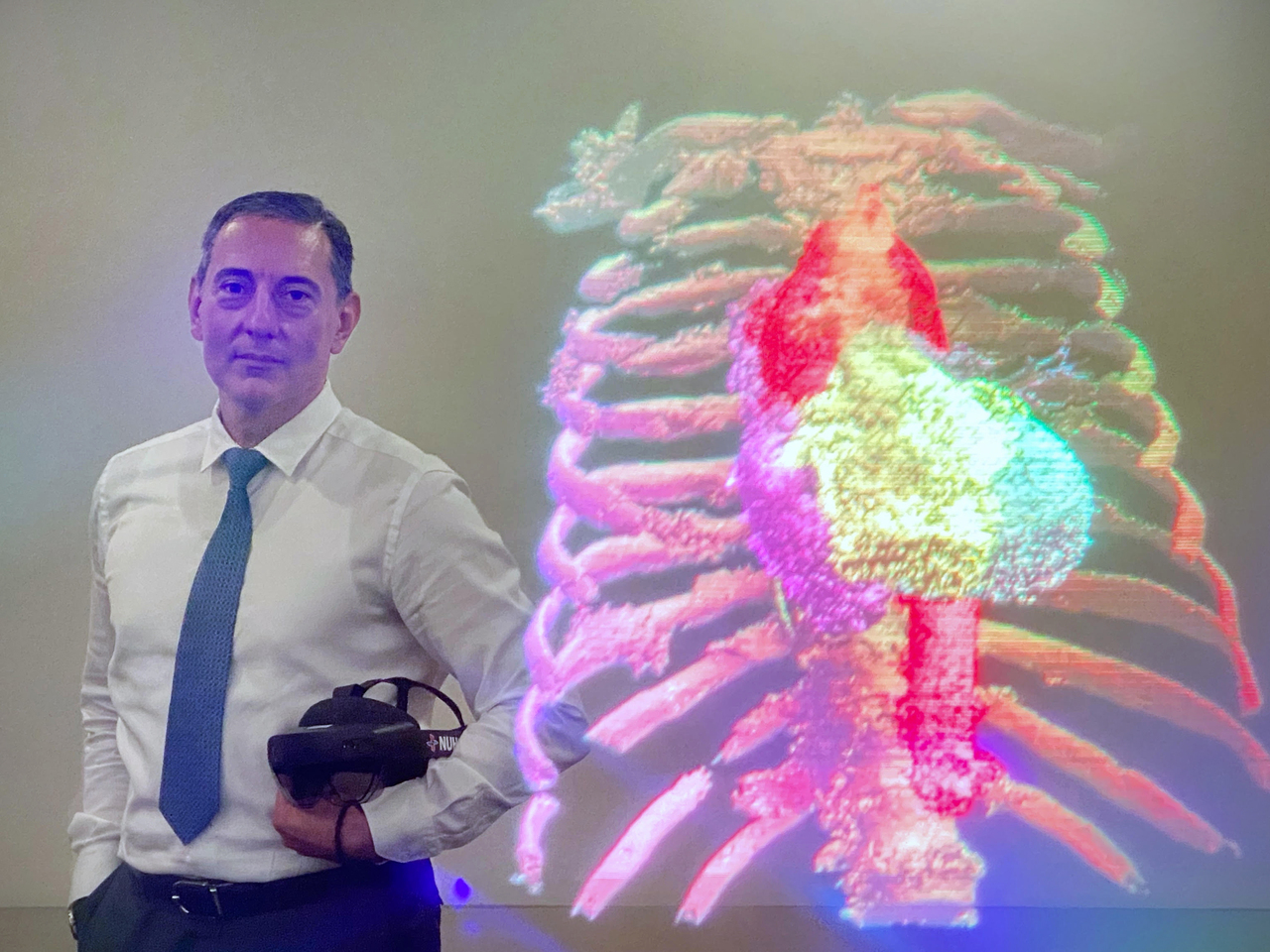Holography-guided heart surgery for more precise, speedier incisions
Sign up now: Get ST's newsletters delivered to your inbox

Associate Professor Theodoros Kofidis with a hologram of a heart as seen through a HoloLens 2 headset.
ST PHOTO: NG SOR LUAN
Follow topic:
SINGAPORE - A science-fiction trope has turned into reality with Singapore's first holography-guided heart surgery successfully conducted by a team of surgeons from the National University Heart Centre, Singapore (NUHCS).
The doctors, wearing holographic visors, could see a three-dimensional (3D) hologram of the patient's heart, derived from a CT scan and projected into space, giving them a coloured "X-ray" vision of the exact inner organ anatomy and position in space, as if they could peek through the chest wall, in real time.
The technology serves mainly as an aid for doctors to better plan surgery and anticipate potential difficulties, potentially reducing trauma and bleeding complications that might arise during surgery.
The technology serves mainly as an aid for doctors to better plan surgery and anticipate potential difficulties, potentially reducing trauma and bleeding complications that might arise during surgery.
"(It) is especially useful for patients with unusual anatomy, allowing us to get the best operative view and make the smallest cut possible. The technology allows us to know the exact location and which angle to make the incision and cut the chest during operation, as well as provide a guide during the initial part of the surgery on whether the procedure is going to be a simple or challenging one," said Associate Professor Theodoros Kofidis, who is the head and senior consultant of the Department of Cardiac, Thoracic and Vascular Surgery in NUHCS.
Prof Kofidis carried out what was reportedly the world's first holography-guided minimally invasive adult heart surgery in late October last year. Since then, four other patients have had this technology used for heart surgery.
So far, National University Hospital (NUH) is the only hospital in Singapore with this technology. Some hospitals in countries such as e South Korea, Japan and China have also adopted this technology.
The surgeons are able to move, resize and rotate the 3D hologram with simple gestures, as well as superimpose the hologram onto the patient's chest during surgery.
The first patient was a 75-year-old man diagnosed with advanced stage aortic valve leakage, a condition that occurs when the heart's aortic valve does not close tightly, resulting in some back flow of blood.
The man's heart was dilated and losing function and he needed a valve replacement, which could be done through keyhole surgery.
"This means that we planned for a tiny cut - totally endoscopic procedure - and so anticipated to work in a very confined space... the HoloLens 2 helped me place my incision exactly in the right spot, through the space between the ribs, and at the right height on the chest, so I was exactly over the area where I needed to work," Prof Kofidis said.
HoloLens 2 is a pair of mixed reality smart glasses from Microsoft through which the person can view the hologram.
"HoloLens 2 allowed me to assess the exact distance between the patient's heart structures... These are structures where essential tools will go in," he added.
The hololens also helped Prof Kofidis anticipate the difficulty of the procedure, any complications such as bleeding, which instruments are most optimum and how best to manage his team.
This successful use of holographic technology in heart surgery has been submitted for publication at the International Society for Minimally Invasive Cardiac Surgery conference, to take place in Europe in June 2022.

A group of surgeons from NUH recently performed the first holography-guided heart surgery in Singapore.
ST PHOTO: NG SOR LUAN
Higher numbers of holographic assisted heart surgery will need to be conducted to determine the extent in which patient outcomes have improved.
HoloLens 2 may be especially useful when it comes to congenital heart surgery on children to correct birth defects, as it would allow the patient and their family to visualise the defect, as well as understand the surgical plan, Prof Kofidis said.
Currently, there is no additional cost of using this technology compared with conventional procedures.
Holomedicine technology was first used in NUH's neurosurgery department in 2020 to spatially locate brain tumours when operating on patients.

